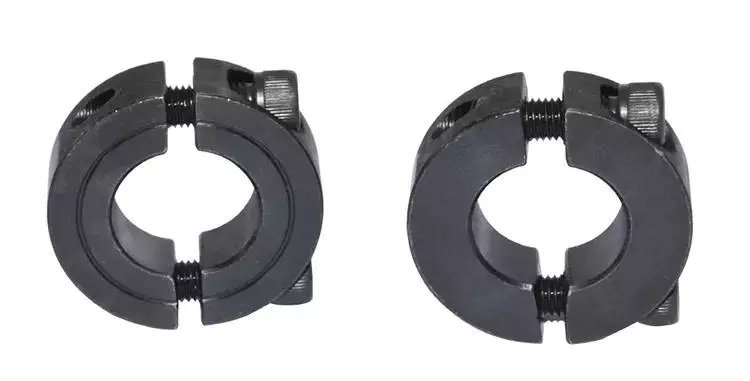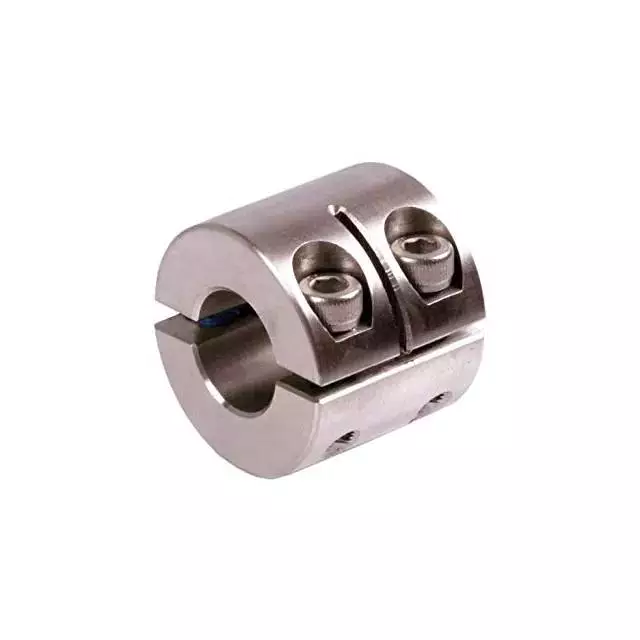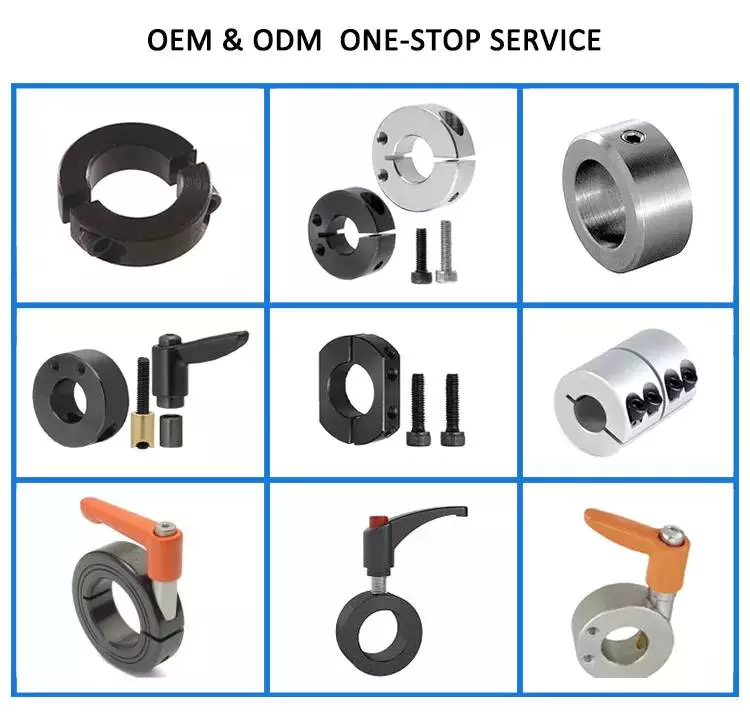Item Description
Spare Parts for Pellet Mill/Equipment Wheel/Shaft/Roller Assembly/Bearing
Using higher quality,putting on resistent spare parts for pellet mill can help help save heaps of price in manufacturing. Our firm materials greatest top quality spare areas for pellet mill, like protection pin, ring dies, rollers, roller assembly, bearing, main shaft, race rotation, equipment wheel etc. We try out very best to help you conserve price and get the marketplace.
Weikeer gives you with a comprehensive set of feeds device options.
Specification personalized:
We can offer ring die for all the main manufacturers of pellet machine this sort of as ANDRITZ, CPM, ZCME, IEMME, JKAP, SOGEM, SPROUT(UMT), MATADOR(UMT), MABRIK,BUEHLER, PALADIN, PTN, PROMILL,YEMMAK etc.Customized proportions and drawings of ring die are welcome.
Pursuing are the regular Design of every brand name:
For Zhengchang pellet mill: SZLH250, SZLH300,SZLH320,SZLH350,SZLH400,SZLH420,SZLH508, SZLH678, SZLH768, etc
For CZPT pellet mill: MUZL180, MUZL350, MUZL420, MUZL600, MUZL1200, MUZL610, MUZL1210, MUZL1610, MUZL2571 MUZL350X, MUZL420X, MUZL600X, MUZL1200X(Especially for shrimp feed pellet, diameter: 1.2-2.5mm)
For Awalia pellet mill: Awalia 420, Awalia350, and many others
For Buhler pellet mill: Buhler304, Buhler420, Buhler520, Buhler660, Buhler900, etc.
For Kahl pellet mill(Flat die): 38-780, 37-850, forty five-1250, etc
Principal Manufacturing Method of Ring die
one.Forging and Lathing:
Extremely specific forging and lathing guarantee high dimensional accuracy, vibrant and thoroughly clean surface area.
two.Die Gap processing:
Innovative Germany gun drill gear, equipment and drilling hole application are utilized in die hole processing:
Higher precision of die hole positon
Large rotating speed and imported equipment and cooling liquid guarantees approach situations as drilling required
Small roughness of the processed die gap, make certain pelleting output and top quality
Good quality and support lifestyle of die is certain.
3.Vacuum warmth remedy
Purpose:
Ring die surface area:No oxidation reaction
Die hole interior surface:First smoothness
Substantial stability, Substantial hardnessHigh tenacity
Compression Ratio of Ring Die
Typically speaking, the greater the compression ratio, the denser the completed pellets.But it does not mean that the increased the compression ratio, the far better the pellet quality.Compression ratio should be calculated dependent on uncooked material for generating pellets and type of feed.
Purchasers can personalize dies with various hole diameter and compression ratio, in accordance to distinct situation and requirement.
| Hole Diameter(mm) | Compression Ratio | |
| Poultry&livestock feed | 2.5-4.5 | one:4-1:eight |
| Fish&Shrimp feed | one.-2.5 | 1:16-1:28 |
| Biomass&Wooden pellet | 6.-12. | one:4-1:eight |
The most typical structure of die gap are straight holeRelease stepped holeExternal conical hole and inner conical gap, and so forth. Different die holes framework are suited for different uncooked material and feed method for making pellets.
| Product | Material Type | Feed Type | Holes Diameter of ring die |
| one | High starch feed | φ2-φ6 | |
| two | Pellet of livestock and poultry | High energy feed | φ2-φ6 |
| 3 | Pellet of aqua feed | High protein feed | φ1.5-φ3.5 |
| 4 | Pellet of compound fertilizer | Feed include urea | φ3-φ6 |
| 5 | Pellet of hops | High fibre feed | φ5-φ8 |
| six | Pellet of chrysanthemum | High fibre feed | φ5-φ8 |
| seven | Pellet of peanut shell | High fibre feed | φ5-φ8 |
| 8 | Pellet of cottonseed hull | High fibre feed | φ5-φ8 |
| 9 | Pellet of turf | High fibre feed | φ5-φ8 |
Warm Guidelines
How to sustain and inspect the ring die?
one.The rollers ought to be correctly modified, make sure the hole inlets are not damaged by get in touch with with the rollers or as a result of tramp steel
two.Substance ought to be evenly distributed throughout the entire functioning region
3.Make sure that all holes function uniformly, opening the clogged holes if needed
four.When modifying dies, very carefully examine the situation of the die seating surfaces and repairing methods which includes collar, clamp or use ring.
FAQ:
one.Q:Are you a trading organization or a manufacturer?
A:We are a manufacturer, which has practically twenty a long time of knowledge in this industry.
two.Q:How can I get to your company?
A:You can get a flight to HangZhou Lukou Airport. Then you can just take the high-pace railway from HangZhou station to HangZhou station. Or We will go to select up.
three.Q:Do you have some foreign buyers using your pellet mill die?
A:Indeed, we have.Our firm has recognized company associations with consumers in South Africa, Canada,Vietnam, Argentina, New Zealand, Peru, India,Pakistan, Ecuador and so forth.
4.Q:How lengthy can your ring die be utilized?
A:Our ring die has extended services existence.The provider lifestyle time is about one thousand-2000 several hours.
5.Q:What are the variables affecting the lifespan of a die?
A:There are several variables influence the support lifestyle of a die:
The composition of raw content
The qualities of raw materials
The moisture and unwanted fat content material of material before pelletizing
The particle dimension of the mash
The warmth conditioning of the mash
The pellet mill controls
Many other folks
six.Q:How to purchase your pellet mill spare areas?
A:Just inform us the brand name and model of your pellet equipment, we will make the exact pellet mill spare elements for you.
Welcome to go to us!
|
US $600-4,000 / Piece | |
1 Piece (Min. Order) |
###
| Type: | Flat Die Platen Wheel |
|---|---|
| Voltage: | 380V |
| Automatic Grade: | Automatic |
| Controlling Mode: | CNC |
| Energy Saving: | Energy Saving |
| Warranty: | 1 Year |
###
| Customization: |
Available
|
|---|
###
| Hole Diameter(mm) | Compression Ratio | |
| Poultry&livestock feed | 2.5-4.5 | 1:4-1:8 |
| Fish&Shrimp feed | 1.0-2.5 | 1:16-1:28 |
| Biomass&Wood pellet | 6.0-12.0 | 1:4-1:8 |
###
| Model | Material Type | Feed Type | Holes Diameter of ring die |
| 1 | High starch feed | φ2-φ6 | |
| 2 | Pellet of livestock and poultry | High energy feed | φ2-φ6 |
| 3 | Pellet of aqua feed | High protein feed | φ1.5-φ3.5 |
| 4 | Pellet of compound fertilizer | Feed include urea | φ3-φ6 |
| 5 | Pellet of hops | High fibre feed | φ5-φ8 |
| 6 | Pellet of chrysanthemum | High fibre feed | φ5-φ8 |
| 7 | Pellet of peanut shell | High fibre feed | φ5-φ8 |
| 8 | Pellet of cottonseed hull | High fibre feed | φ5-φ8 |
| 9 | Pellet of turf | High fibre feed | φ5-φ8 |
|
US $600-4,000 / Piece | |
1 Piece (Min. Order) |
###
| Type: | Flat Die Platen Wheel |
|---|---|
| Voltage: | 380V |
| Automatic Grade: | Automatic |
| Controlling Mode: | CNC |
| Energy Saving: | Energy Saving |
| Warranty: | 1 Year |
###
| Customization: |
Available
|
|---|
###
| Hole Diameter(mm) | Compression Ratio | |
| Poultry&livestock feed | 2.5-4.5 | 1:4-1:8 |
| Fish&Shrimp feed | 1.0-2.5 | 1:16-1:28 |
| Biomass&Wood pellet | 6.0-12.0 | 1:4-1:8 |
###
| Model | Material Type | Feed Type | Holes Diameter of ring die |
| 1 | High starch feed | φ2-φ6 | |
| 2 | Pellet of livestock and poultry | High energy feed | φ2-φ6 |
| 3 | Pellet of aqua feed | High protein feed | φ1.5-φ3.5 |
| 4 | Pellet of compound fertilizer | Feed include urea | φ3-φ6 |
| 5 | Pellet of hops | High fibre feed | φ5-φ8 |
| 6 | Pellet of chrysanthemum | High fibre feed | φ5-φ8 |
| 7 | Pellet of peanut shell | High fibre feed | φ5-φ8 |
| 8 | Pellet of cottonseed hull | High fibre feed | φ5-φ8 |
| 9 | Pellet of turf | High fibre feed | φ5-φ8 |
Choosing a Shaft Collar
The shaft collar is a simple machine component used in a variety of power transmission applications. They are most often found on gearboxes and motors. Their simple design makes them an easy component to install and remove. Among other uses, shaft collars are used as bearing faces, mechanical stops, and locating components.
Clamp-style shaft collars
Clamp-style shaft collars fix many of the problems associated with set-screw collars. Available in two-piece and one-piece designs, these collars compress the shaft and lock into place. This allows for a uniform distribution of force on the shaft. Clamp-style shaft collars provide more holding power than set-screw collars, but they work best under consistent pressure. Clamp-style shaft collars also work better against negative forces, as they have a separate, un-tightened side.
Clamp-style shaft collars feature mounting holes in the outer diameter. Like clamp-style collars, mountable shaft collars can be installed on adjacent assemblies, but the mounting method does not affect holding power. Mountable shaft collars are commonly used in mounting sensor brackets. They may have rounded or flat outer diameters to accommodate the mounting process. Mountable shaft collars may also have tapped or flat holes to facilitate installation.
Quick-clamp shaft collars have the same functionality as clamp-style collars, but feature a removable lever. They are typically quick-to-install and do not mar the shaft. Quick-clamping collars are especially beneficial in applications that require light-duty torque. They also make for quick and easy adjustments.
Heavy-duty shaft collars feature larger outer diameters, a wider face, and a larger screw. These collars are ideally suited for d-shafting and can offer greater holding power than set-screw collars. These collars are typically manufactured from high-strength 2024 aluminum.
Clamp-style shaft collars can be used in many different applications. They can be used for a variety of applications, including bearings, and are especially suited for rotary machines. However, there are some drawbacks. While they may not be as flexible as set-screw collars, they can still perform well under constant loads. One drawback is that they tend to loosen under shocks and reduce the holding power of clamping hardware.
Another advantage of clamp-style shaft collars is that they do not mar the shaft and allow for easy positioning adjustments. Furthermore, they are easier to install and offer greater holding power than set-screw collars. These collars are made from high-quality materials with tight tolerances and are available in different bore sizes.
Clamp-style shaft collars are the most common type of shaft collars. They can be two-piece or one-piece. Among these, two-piece collars are the most convenient option. One-piece collars are hard to move, and two-piece collars have a hinge on one side and a clamp-style collar on the other side.
The materials used in Clamp-style shaft collars play a crucial role in their overall performance. They should be strong, corrosion-resistant, and have good holding power. They should also be able to withstand high temperatures. The most common materials used for shaft collars are steel and aluminum. Some types are made from stainless steel, while others are made from engineered plastic.
Clamp-style shaft collars can come in two pieces or single-piece designs. The smaller one-piece collars usually have a back-cut opposite the clamp cut, which reduces the cross-sectional area at the hinge point. This reduces the amount of force required to clamp the collar, which makes it easier to use stronger screws.
Aluminum, carbon steel, and stainless steel shaft collars
When choosing a shaft collar, you should consider the material it is made of. You can purchase collars made of carbon steel, aluminum, or stainless steel. Each of these materials has its benefits and disadvantages. Steel is more durable than aluminum and tends to provide better holding power. Aluminum, on the other hand, is lighter and has a favorable strength-to-weight ratio. The material you choose should depend on your specific needs, such as corrosion resistance or weight.
Mountable shaft collars are used to mount sensors, fixtures, and other assemblies. These collars are available with outer diameter holes, flats, or quick-release designs. The material used to make these collars varies, with standard models made of 1215 lead-free steel and 2024 aluminum.
When choosing shaft collars, take into account the material and surface treatment. Different materials offer different properties, which will determine the performance of the collar. In addition to material, each shaft collar comes with a different holding power. Holding power is a key factor in choosing a shaft collar because it determines the amount of load it can withstand without slipping. The holding power depends on the screw size, the bore size, and the bulk of the collar.
Aluminum, carbon steel, and stainless steel shaft-collars can come in various styles. CZPT, for example, offers standard shaft collars in hex and d-bore profiles. Hex collars provide extra holding power and are better than set screws. Additionally, they do not mar the shaft and provide a better grip.
Another type of shaft collar is the quick-clamp shaft collar. These features allow users to install and remove them with ease. The quick-clamp collar has a handle that allows the user to quickly adjust it. While these shaft collars are designed for light duty applications, they are not recommended for heavy-duty or high-RPM applications.
Shaft collars are simple yet versatile components. They are used for various applications, including mechanical stops, stroke limiters, and retainers. They can also be used to align and space other components. Shaft collars are widely used in gearbox assemblies, flagpoles, and medical instruments, among others.
Two-piece shaft collars offer the same benefits of one-piece shaft collars, but offer additional convenience and versatility. They are easier to install and disassemble, reducing installation and labor costs. They also offer superior holding power. They also feature a threaded bore that acts as a positive mechanical stop when the shaft is rotated.
Over-torqueing shaft collars
Shaft collars are often used to secure components on shafts or other surfaces. They also provide an easy way to adjust the positioning of motor assembly components. Many different types of shaft collars are available to meet the specific needs of different applications. These include round, hexagonal, square, and D-bore collars.
The design of shaft collars must account for the load they will support. Some collars are made of metals, while others are made of plastic or composite materials. Typically, shaft collars are made of steel, but can also be made from aluminum or alloyed steel. Some are coated with zinc.
Shaft collars are available in one-piece and two-piece designs. Single-piece collars are designed to fit securely around a shaft, while double-piece collars allow for greater clamping force. These collars can be assembled anywhere along the shaft and can be installed between two pieces. They are available in different bore configurations and can be customized to meet your specific application.
Clamp style collars are easy to install and disassemble, and have a larger holding force than one-piece collars. These collars are also more shock-load resistant. They also don’t mar shaft surfaces, unlike setscrews. They can also be easily adjusted without damaging the shaft. Another style of collar is the quick-clamping style. This type of collar doesn’t mar the shaft, and is easily installed and removed without tools. These are best for light-duty applications.
When choosing a shaft collar, you should consider the tolerance of the shaft. It is important to select a shaft with a tight tolerance. The shaft’s hardness should not be greater than Rockwell C35. A wide tolerance will affect the holding power of the collar. If the shaft is undersized, you may need to use a screwdrive to slide the collar on the shaft.
Shaft collars are a versatile component with many different applications. They can secure industrial railings or serve as positioning devices in medical equipment. They are also widely used in automation machinery. They are used to protect cylinders and actuators and to ensure alignment between components. For this reason, they are very versatile and adaptable.
Clamp-style collars work well under constant loads, but they may need assistance during impact loads. Shock loads can be difficult to avoid, especially if the mass is small. Clamp-style collars with an undercut in the shaft help to resist the impact of shock. Moreover, they offer positive stops in both axial directions.
Clamp-style shaft collars are a good alternative for set-screw collars. They are easy to install and prevent shaft damage. They also come with an added advantage of being easy to adjust. Clamp-style shaft collars have double the holding power of set-screw collars.
In addition to holding components, shaft collars can also function as spacers and limit shaft movement. They are essential for many applications. They are commonly used in motors and gearboxes to ensure correct positioning for power transmission. They are also used to control shaft movement in reciprocating applications.

editor by czh 2023-01-06